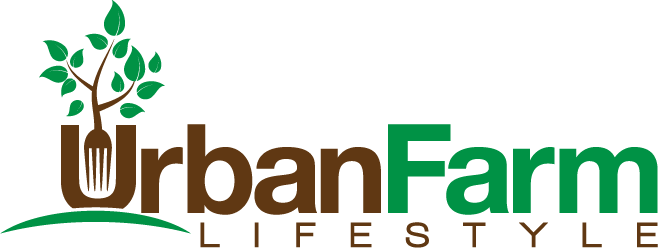Healthy Sustainable Lifestyle
Pumpkins
Pumpkins can be used for decorations, as ornamental stacks on your front porch, or to scare little ones around Halloween. Most of all, pumpkin can be used as a healthy food source in desserts and snacks.
Enjoy,
David Proctor
We may not live on a farm, but we can grow where we live.
Pumpkins
October 22, 2015
Published Weekly Urban Farm Lifestyle Magazine
The following how to is from gardening know how.
“Perhaps this year you found the perfect pumpkin to make a jack-o-lantern from or you grew an unusual heirloom pumpkin and wish to try growing it again next year.”
“Saving pumpkin seeds is easy. Planting pumpkin seeds from pumpkins you have enjoyed also ensures that you can enjoy them again next year.
Saving Pumpkin Seeds
- Remove the pulp and seeds from inside the pumpkin. Place this in a colander.
- Place the colander under running water. As the water runs over the pulp, start picking out the seeds from the pulp. Rinse them in the running water as you pick them out. Do not let the pumpkin pulp sit in non-running water.
- There will be more seeds inside the pumpkin than you’re going to need to use, so once you have a good amount of seeds rinsed, look over them and choose the biggest seeds. Plan on saving 3 times more pumpkin seeds than the number of plants you will be growing next year. Larger seeds will have a better chance of germinating.
- Place the rinsed seeds on a dry paper towel. Make sure they are spaced out; otherwise, the seeds will stick to one another.
- Place in a cool dry spot for one week.
- Once the seeds are dry, store pumpkin seed for planting in an envelope.”
Properly Store Pumpkin Seeds for Planting
“When saving pumpkin seeds, you also need to store them so that they will be ready to plant for next year. Any seeds, pumpkin or otherwise, will store best if you keep them somewhere cold and dry.
One of the best places to store pumpkin seed for planting next year is in your refrigerator. Put your pumpkin seed envelope in a plastic container. Place several holes in the lid of the container to ensure that condensation does not build up on the inside. Place the container with the seeds inside at the very back of the fridge.
Next year, when it comes time for planting pumpkin seeds, your pumpkin seeds will be ready to go. Saving pumpkin seeds is a fun activity for the whole family, as even the smallest hand can help. And, after you properly store pumpkin seeds for planting, children can also help plant the seeds in your garden.”
http://www.gardeningknowhow.com/edible/
vegetables/pumpkin/saving-pumpkin-seeds-how-to-store-pumpkin-seed-for-planting.htm
Once you have the seeds removed, you can use the pumpkin to cook with. This recipe shows how to make a pumpkin pie without the top splitting.
Best Pumpkin Pie Ever
Pumpkin nutrition facts
The following is from nutrition and you.
“Pumpkin is one of the most widely grown vegetables, incredibly rich in vital antioxidants, and vitamins.
Though this humble backyard vegetable is low in calories, it carries vitamin A, and flavonoid poly-phenolic antioxidants such as lutein, xanthin, and carotenes in abundance.
Pumpkin is a fast-growing vine that creeps along the surface in a similar fashion like that of other Cucurbitaceae family vegetables and fruits such as cucumber, squash, cantaloupes…etc.
It is one of the most popular field crops cultivated around the world, including in the USA at commercial scale for its fruit, and seeds.
Pumpkins vary greatly in shape, size and colors. Giant pumpkins generally weigh 4–6 kg with the largest capable of reaching a weight of over 25 kg.
Golden-nugget pumpkins are flat, smaller and feature sweet creamy orange color flesh.
Pumpkins, in general, feature orange or yellow outer skin color; however, some varieties can exhibit dark to pale green, brown, white, red and gray.
Their color characteristics is largely influenced by yellow-orange pigments in their skin and pulp. Its thick rind is smooth with light, vertical ribs.
In structure, the fruit features golden-yellow to orange flesh depending up on the poly-phenolic pigments in it. The fruit has a hollow center, with numerous small, off-white colored seeds interspersed in a net like structure.”
“Pumpkin seeds are a great source of protein, minerals, vitamins, and omega-3 fatty acids.”
| (Source: USDA National Nutrient data base) | ||
| Principle | Nutrient Value | Percentage of RDA |
| Energy | 26 Kcal | 1% |
| Carbohydrates | 6.50 g | 5% |
| Protein | 1.0 g | 2% |
| Total Fat | 0.1 g | 0.5% |
| Cholesterol | 0 mg | 0% |
| Dietary Fiber | 0.5 g | 2% |
| Vitamins | ||
| Folates | 16 mcg | 4% |
| Niacin | 0.600 mg | 4% |
| Pantothenic acid | 0.298 mg | 6% |
| Pyridoxine | 0.061 mg | 5% |
| Riboflavin | 0.110 mg | 8.5% |
| Thiamin | 0.050 mg | 4% |
| Vitamin A | 7384 IU | 246% |
| Vitamin C | 9.0 mg | 15% |
| Vitamin E | 1.06 mg | 7% |
| Vitamin K | 1.1 mcg | 1% |
| Electrolytes | ||
| Sodium | 1 mg | 0.5% |
| Potassium | 340 mg | 7% |
| Minerals | ||
| Calcium | 21 mg | 2% |
| Copper | 0.127 mg | 14% |
| Iron | 0.80 mg | 10% |
| Magnesium | 12 mg | 3% |
| Manganese | 0.125 mg | 0.5% |
| Phosphorus | 44mg | 5% |
| Selenium | 0.3 mcg | <0.5% |
| Zinc | 0.32 mg | 3% |
| Phyto-nutrients | ||
| Carotene-a | 515 mcg | — |
| Carotene-ß | 3100 mcg | — |
| Crypto-xanthin-ß | 2145 mcg | — |
| Lutein-zeaxanthin | 1500 mcg | — |
http://www.nutrition-and-you.com/pumpkin.html
How to Carve Halloween Pumpkins
As you can see the great pumpkin has many uses, from decoration, to healthy snacks and desserts. You can make pumpkin bread, pumpkin cheesecake, pumpkin cookies and the list goes on. Save your seeds and grow some pumpkins this next year, they are easy to grow and the benefits from the plant make it worthwhile.


Check It Out!
How to Roast Pumpkin Seeds
Paula Deen
Quick Tip
Tips for Growing Great Heirloom Organic Pumpkins
The following quick tip is from Sustainable Seed Co.:
“Heirloom Pumpkins do not like wet, soggy soil.
Heirloom pumpkins aren’t too fussy, but if you want really big pumpkins should should add lots of great composted manure under each hill of pumpkins.
We dig large holes out about the size of a beach ball and replace it with rich composted humus. To that we may add a hand full of bone meal and blood meal.
We stir this up really well and use the remaining soil to make our hill. It is on top of this hill we will plant our pumpkin seed.
Organic pumpkins are deep-rooted, water-conserving plants and should be watered deeply and infrequently to encourage good vine and root growth.
Rember organic pumkins can ramble up to 12′ so give them plenty of space.”
Bibliography:
“How To Harvest And Store Pumpkin Seeds.” Gardening Know How. N.p., 30 Aug. 2008. Web. 19 Oct. 2015.
“Pumpkin Heirloom Seeds.” Heirloom Pumpkin Seeds. N.p., n.d. Web. 19 Oct. 2015.
“Pumpkin Nutrition Facts and Health Benefits.” Nutrition And You.com. N.p., n.d. Web. 19 Oct. 2015.
All photographs are copyrighted under Proctor Company Incorporated, can not be used without permission.
What Did You Think?









Recent Comments